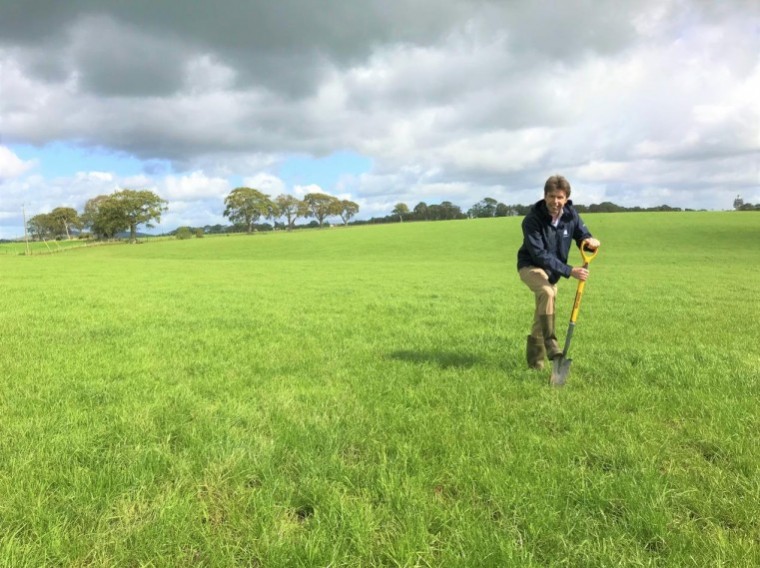After a 2018 which saw extended heatwaves significantly affect silage production across the UK and Ireland, it’s more essential than ever to drive the best possible yields from first cut grass silage this year. Here’s five ways nitrogen (N) can help you get ahead this spring:
1. Start applying N from 5°C and upwards
As the weather warms this spring, soil temperature will rise to 5 °C and upwards. This is the ideal point to apply a readily available source of nitrogen to grassland to promote tillering and growth.
“Grass response to N is highest in April and May, therefore the economic return on nitrogen is greatest on 1st cuts,” said Philip Cosgrave, grassland agronomist at Yara, in a recent interview. “According to our trials work, the optimum N rate on productive swards is 120-130kg/ha for first cuts – you’re far more likely to grow six tons of dry matter per hectare rather than five with these rates.”
2. For silage, apply six to seven weeks in advance
For silage, first cuts are likely to be in April or May, depending on weather conditions. For best results, fertilizer should be applied six to seven weeks in advance of the expected harvest date. It’s worthwhile splitting mineral N applications in some circumstances. For example, if applying 100kg of mineral N and 20kg of N via slurry, it’s possible to promote better growth by applying a proportion – perhaps 30 or 40kg of the mineral N – at the end of February or early March.
3. Do the numbers add up?
Generally, a 5 tonne/ha dry matter first cut silage will result in the following loss of nutrients in the soil:
- 165kgs of Potassium (K2O)
- 35kgs of Phosphorous (P2O5)
- 31kgs of Sulphur (SO3)
To grow that crop to its optimal yield, it’s essential to invest in the proper nutrients and replenish those rates.
As an example, the optimal application for first cut silage on a ryegrass sward would be 120kg of N. If you only apply 100kg of N, it might not seem like too great a difference. However, a kg of N has the potential to grow 32kg of dry matter resulting in a total of 640kg dry matter lost per hectare. “All in all, that 20kg difference in N will result in a loss of 2.5 tons of fresh weight per hectare,” said Mr Cosgrave. “That’s a substantial difference for any farm business.”
4. When can I apply nitrogen?
For grazing, spring will deliver a gradual increase in dry matter production per day. To achieve that increase, there needs to be an available source of N. The “sweet spot” for N application is when the soil temperature reaches 5 °C on an upward trajectory. At this stage, the approach that leads to higher outputs is to put on small applications. Generally, this will be from February onwards, and experts recommend the use of a soil thermometer to ensure the most value from your fertilizer applications. “If grass doesn’t have a supply of nitrogen, it’s growth potential will be negatively impacted,” said Mr Cosgrave. “Without nitrogen applications, your growth rates are likely to be reduced by up to 50%.”
5. Don’t wait – prepare now
Whether it’s via an organic or mineral source, it’s important to ensure nitrogen is readily available for spring grass growth, especially following such a difficult year. To ensure the best results, choose your product and be ready to apply when soil temperature reaches an upward trajectory of 5 degrees.
“Even where pastures have traditionally been grazed in March and April, the same rules will apply: it’s simply not wise to wait,” added Mr Cosgrave. “You need to apply N – ideally with phosphate and potassium – as the temperature starts to warm up, to ensure the pasture reaches its optimum productivity.”
Pictured: Philip Cosgrave




